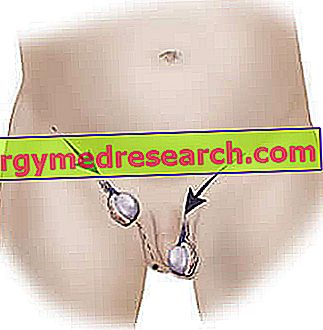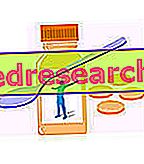Watch the video
X Watch the video on youtubeWhite Teeth
Natural teeth whitening is the cheapest alternative to chemical bleaching, professional tooth whitening performed with hydrogen peroxide or other chemical brighteners. The ancient techniques of natural whitening of the teeth contrast with the most modern (and expensive) cosmetic dentistry treatments, indicated to obtain an enviable smile and very white teeth.
Having white teeth and a shiny smile is not always synonymous with healthy and clean teeth. Before resorting to any whitening treatment - be it natural or chemical - a specialized dental examination is essential. It is in fact up to the dentist to consent or not to whiten the teeth and indicate the most appropriate type.
In the presence of caries, gingivitis, diseases of the oral cavity, pulpits or dental hypersensitivity, teeth whitening is recommended only after treating the underlying problem . This is why it is important to undergo periodic (every 6-12 months) professional dental hygiene and, at least once a year, dental check-ups (and not only when your teeth hurt ...).

In this regard, let us briefly recall that the worst enemies of white teeth are substances such as coffee, tea, chocolate and tobacco. Smoking, genetic predisposition and aging can also alter the much sought after dental whiteness.
Natural remedies
The natural remedies used in the past to whiten teeth are still today important steps to improve the aesthetics of the smile.
Natural whitening treatments are not all the same. Some are rather delicate and relatively inexpensive, while others are more aggressive and can cause serious damage to tooth enamel.
There are many natural tooth whitening treatments you can trust. However, even if labeled as "natural", it is always necessary to use them with moderation and prudence.
Indeed, contrary to what many think, "natural" is not necessarily synonymous with security, on the contrary. Often, natural remedies can present different risks and cause damage, especially when used by people who are not familiar with the properties of these natural substances.
Just to give an example, if many are aware of the "miraculous" bleaching effect of baking soda, few know that excessive use of the same substance can cause damage such as gum bleeding, dental hypersensitivity, alterations in the natural bacterial flora of the mouth, etc. ..
Types of Natural Bleaches
The natural whiteners used to give new whiteness to the teeth are really many, from the most delicate, to the most aggressive and "risky". However, we can say that the most popular ones - and those most used today - are:
- Sodium bicarbonate
- The sage
- Apples, raisins, celery and carrots
- The lemon
- The orange peel
- Oxygenated water
- Walnut ash
- The root of the Araak tree
Let us therefore clarify the situation by analyzing the different teeth whitening strategies with the aforementioned types of natural whiteners, whose characteristics, use, positive, negative aspects and potential risks associated with their use will be described .
Sodium bicarbonate
Baking soda is certainly one of the most well-known home and natural remedies for whitening teeth. The bleaching action is exercised by abrasion.

The effectiveness of this natural whitener is proven and recognized for a long time, not surprisingly, it is often added to toothpastes to obtain a product with a natural whitening effect.
Advantages
- Removes stains and imperfections from dental enamel.
- Makes teeth shiny and healthy.
Risks and Disadvantages
- You must rinse your mouth thoroughly after bleaching your teeth with baking soda.
- Prolonged use of this natural whitener is not recommended because it can erode the enamel from the teeth.
- It must be used in the right amounts to avoid putting dental health at risk.
- Unpleasant taste.
- The increase in the pH of the oral cavity exercised by bicarbonate alters the bacterial flora of the mouth.
- Contraindicated in the presence of exposed dentin and root canal cement.
- It can promote or increase dental hypersensitivity.
Sage
Sage is another ancient remedy successfully used to obtain white teeth and fresh breath. Generally, it is advisable to rub a sage leaf directly on the teeth, or it can be used for the preparation of homemade toothpastes (for more information, see the article "Sage: White Teeth and Healthy Gums").

Advantages
- Removes stains formed on the outer surface of the tooth.
- Teeth whiten naturally with a chemical and mechanical (abrasive) action.
- It also has a good antibacterial effect.
- Remedy for halitosis.
Risks and Disadvantages
- Do not abuse: simply repeat the application twice a week. An immoderate use of sage as a natural whitener can increase the dentinal sensitivity.
Malic acid
Malic acid is an alpha-hydroxy acid characteristic of fruit, particularly abundant in apples and strawberries. Also in this case, it is usually recommended to rub the fruit in question directly on the teeth. Alternatively, the fruits can be ground to obtain a paste that will be applied to the teeth.
Strawberry paste rich in malic acid must be kept on the teeth for at least 5 minutes to ensure a good natural whitening effect.
Furthermore, green apple juice is particularly rich in terms of malic acid; therefore, it can occasionally be used as a natural mouthwash.
Advantages
- Increase the brightness of the teeth.
- It has a good natural whitening effect.
Risks and Disadvantages
- The whitening method must be used with caution because malic acid may damage tooth enamel.
- This whitening tool should not be used more than twice a week.
Apples, raisins, celery and carrots
These foods act as stain removers and natural whiteners because they increase the production of saliva, a physiological self-cleaning agent that also helps prevent plaque formation. Furthermore, as we have seen, the apple is also rich in malic acid which increases its whitening action.
Advantages
- In addition to acting as natural whiteners, apples, celery and carrots also help maintain fresh breath, preventing the bacteria responsible for halitosis from surviving.
Risks and Disadvantages
- No particular risks or disadvantages related to the natural whitening of teeth with celery, apples, carrots and raisins are reported.
Lemon (peel and juice)
Lemon is another of the best known natural whiteners, used both in the past and in recent times. It is particularly suitable for whitening yellow teeth caused by cigarette smoke.
It is possible to use both the juice and the peel that must be rubbed directly on the teeth. Alternatively, the juice can be added to the whitening paste prepared with bicarbonate.
Advantages
- Exerts a valid natural whitening effect.
Risks and Disadvantages
- An abuse of this natural whitening substance (juice or peel) on the teeth can damage the enamel due to its excessive acidity.
- After rinsing with lemon juice (or after rubbing the peel on the teeth) it is recommended to immediately wash the mouth with plenty of warm water.
Orange peel
The orange peel has a natural whitening effect similar to that obtained with lemon. Generally, it is recommended to rub the orange peel directly on the teeth.
Advantages
- The whitening effect obtained is very valid, similar to that of lemon.
Risks and Disadvantages
- In the presence of dental hypersensitivity, natural whitening performed with orange peel can increase perceived discomfort.
Hydrogen peroxide
Hydrogen peroxide (hydrogen peroxide) can be considered the bleaching substance par excellence which, however, must be used very carefully.
A 3% solution of hydrogen peroxide can be used as an occasional method of natural teeth whitening.
Alternatively, you can get a natural whitening toothpaste by mixing 1 teaspoon of baking soda with 2 of hydrogen peroxide.
Advantages
- Good bleaching effect.
Risks and Disadvantages
- To avoid damage and side effects, hydrogen peroxide should NOT be ingested at all.
- For the same reason mentioned above, after treatment, it is essential to rinse thoroughly with warm water.
Walnut ash
The use of ash from walnut wood is an ancient remedy used as a natural tooth whitening treatment. The whitening action is due to the potassium hydroxide contained in the ash.
Alternatively, to obtain a natural whitening of the teeth, it is also possible to rub the bark of the walnut wood.
This natural whitening method, however, must be used in moderation.
Advantages
- Good bleaching effect.
Risks and Disadvantages
- The potassium hydroxide contained in the ash can cause burning in the mouth.
Araak tree root
The root of the Araak tree ( Salvadora persica ) - also known as "Miswak" - is an ancient remedy for cleaning teeth, used already by the ancient Egyptian and Babylonian populations who considered it a real instrument for the 'oral hygiene.
The root can be found in various herbalist's shops, in specialized shops and even online in the form of a stick that must be rubbed on the teeth. The whitening action - and, in part, antibacterial - is due to the richness of the substances contained in it, including fluorides, silicon and vitamin C.
Advantages
- Allows you to perform a good natural whitening.
- It also performs an antiseptic action.
Risks and Disadvantages
- If rubbed with too much vigor, the Araak root could be abrasive.
- Excessive rubbing can affect tooth enamel.
- Inordinate use may increase the dentinal sensitivity.
Other Natural Bleaches
Some sources report a curious natural whitening effect obtained by mixing water with micro-fragments of rock salt. Similarly, apple vinegar can also have a moderate natural whitening effect on the teeth.
Please note
Let us once again remember that natural tooth whitening must not be performed in the presence of caries, pyorrhea, gingivitis, tartar and pulpitis.
Useful tips
Useful tips to keep your teeth white

- Careful oral hygiene
- Brush your teeth after every meal or snack
- Not smoking
- Alternate toothpastes formulated with natural whitening substances to those for sensitive teeth
- Watch out for toothpastes that are too aggressive for tooth enamel
- Use a soft bristle toothbrush
- Do not abuse disinfectant mouthwashes
- Limit your intake of coffee, tea and chocolate
Use natural bleaching substances carefully and for short periods. Excessive teeth whitening treatments (both chemical and natural) can attack the enamel and make the teeth hypersensitive.



